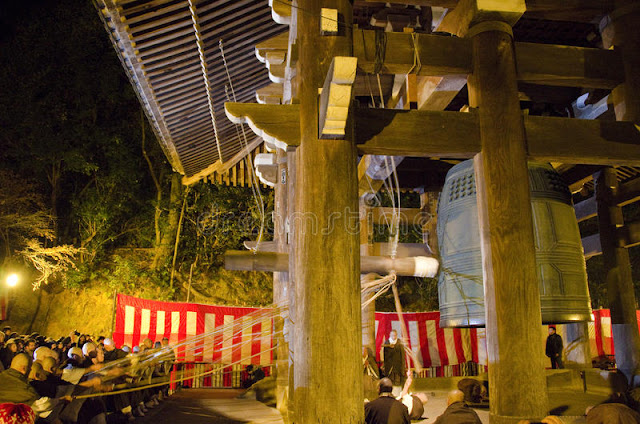 |
| Find Vijayas latest book HERE |
Also called St Sylvester’s night in Europe, New Year’s Eve, and New Year's day, include many traditions to ease the transition and generate good luck and prosperity.
In the US, whether you are, from the East to the West coast, you will probably have or attend a party, count the seconds to midnight, and watch the ball drop in Time Square. You will have a drink and sing Auld Lang Syne, and some will stand under the mistletoe, for a chance of a kiss at midnight.
In Canada the fireworks are magnificent. And some of the most popular New Year’s Day traditions are the Polar Bear Swim in Vancouver, and to go ice-fishing. Brrrr!
In Japan, December 31st is a national cleaning day. The houses are scrubbed from floor to ceiling and decluttered, to start the new year in a favorable setting. On New Year’s Eve, it is also the tradition to eat buckwheat noodles called Toshikoshi soba. Just before midnight, Buddhist temple bells ring out 108 times, representing the 108 earthly temptations a person must overcome to achieve nirvana and get rid of last year’s bad luck.
 |
| The enormous bell is rung with a strong pole, pulled by several people with ropes. |
In Brazil, everyone wears white on New Year’s eve for good luck and peace. They also run to the beach and throw white flowers into the ocean. Of course, it’s summer and beach weather in Brazil that time of year.
In Mexico, at midnight, people drop a gold ring into their glass to bring good fortune in love and money. Then on January 1st, they go door to door, offering home-made tamales to friends and neighbors. I’ve also seen it done in Arizona as traditions migrate.
In Greece, onions are a symbol of good luck and fertility, so, on New Year's Eve, they hang bundles of onions above their doors to invite prosperity into the home. Then, on New Year's Day, parents wake up their children by gently knocking them on the head with the onions that were outside.
In Singapore, revelers let wishing spheres containing their hopes and dreams float down the river. Thousands of them on the Singapore River make for a magical sight.
In Puerto Rico, they dump a bucket of water from a window to ward off evil spirits. I hope it’s not on the pedestrians below. They also sprinkle sugar outside their houses for good luck.
In Russia, New Year's Eve revelers write a wish down on a piece of paper, burn it and add the ashes to their champagne or vodka glass. Then they drink the entire glass quickly at midnight, in less than a minute, to make their wish realize.
In France, Champagne is the drink de rigueur to ring the New Year, along with raw oysters on the shell, turkey, goose, and seafood, in an elaborate and abundant meal they call a reveillon. And in Paris, the Eiffel Tower lights up in a splendid show of lights for the occasion.
In Spain, to get good luck in the New Year, you must eat 12 grapes on the 12 rings of midnight, and keep the pace… no sweat, just don’t choke!
In Switzerland, they summon wealth, and abundance by dropping ice cream on the floor at midnight. Personally, I think it’s a waste of delicious ice-cream.
In Denmark, to celebrate the New Year, they smash old plates on the doors of family, friends, and neighbors, to ward off evil spirits. The more broken plates at your door in the morning, the more good luck in the New Year.
In India, they build an effigy of an old man and burn it at midnight, to symbolize the death of the old year with its struggles, to make room for the new and hopefully better year.
In China, they celebrate the New Year on a lunar cycle, in January or February, and the festivities last two weeks. Lots of dragons parading on the streets, food, fireworks, and the color red, for good luck.
I wish you all a fantastic New Year, with success and happiness all year long.
Vijaya Schartz, award-winning author
Strong Heroines, Brave Heroes, cats





No comments:
Post a Comment